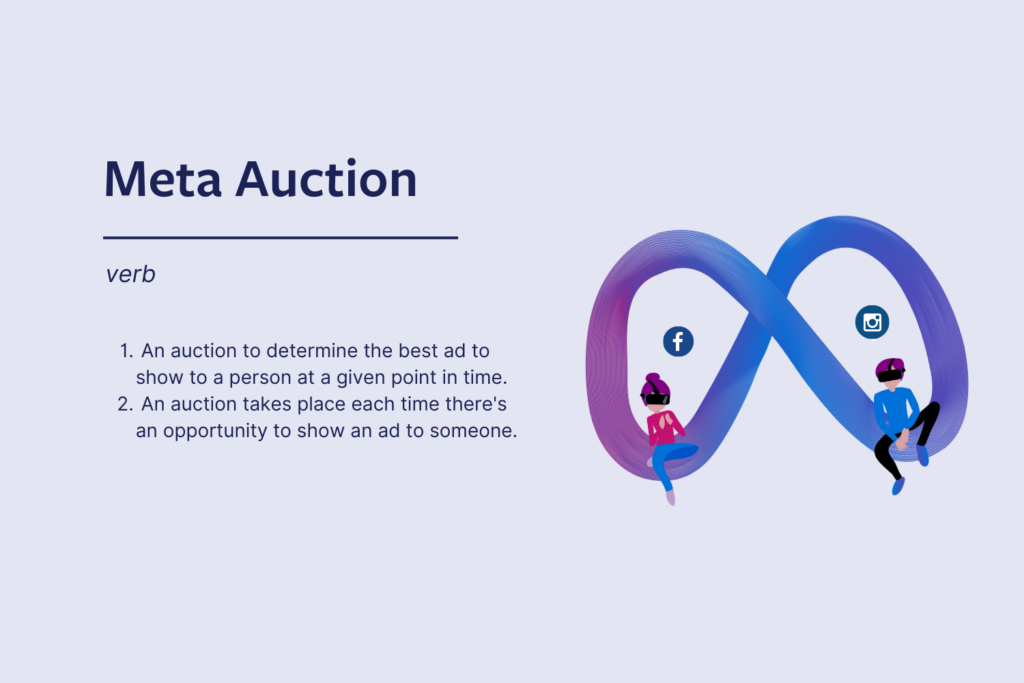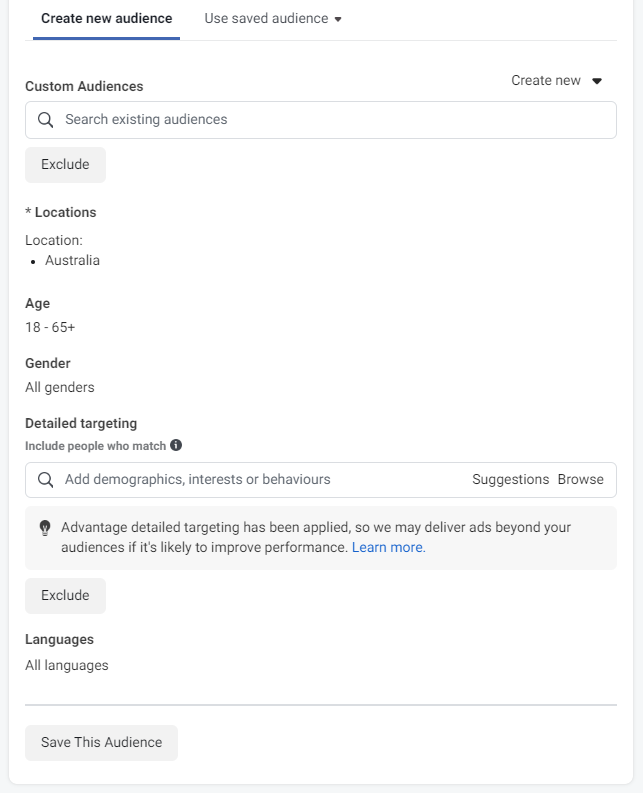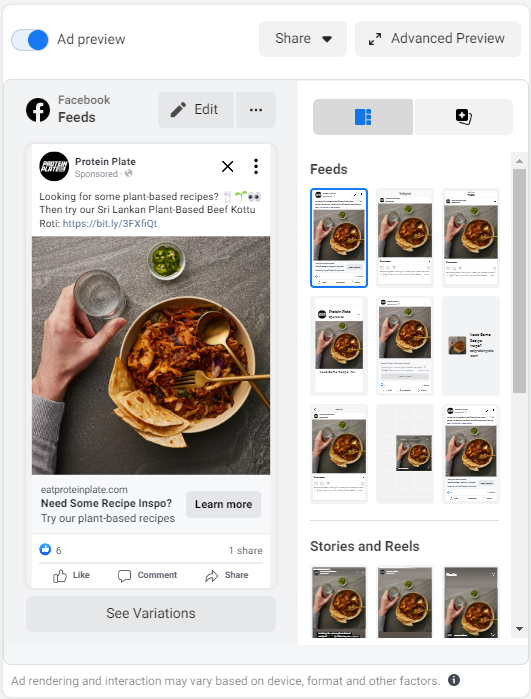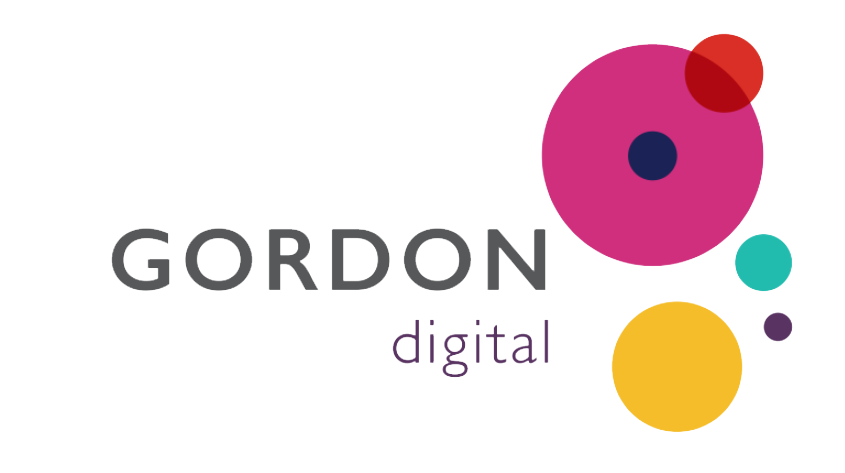
Key Takeaways
- Meta Ads is one of the most effective digital marketing platforms
- The platform is highly competitive, and ad placements are determined by your budget, ad quality, ad relevance and estimated action rates
- Selecting the right audience, campaign objectives and budget is critical to achieving your marketing goals
- Ad creative has a major impact on your ads – visual media is assessed closely by the Meta Ads auction system
- Ads are often rejected due to the quality of the ad or because it violates Meta’s terms of service
Meta Ads auctions in a nutshell
Objective of the auction
Ad revenue is the biggest source of income for Meta.
In fact, Meta Ads are so popular that there’s no way the platform can display every ad that’s submitted. Instead of showing every ad, Meta runs micro auctions for each piece of advertising space, and the winning ads are displayed.
That sounds simple, but these auctions are powered by sophisticated algorithms.
This is because Meta aims to deliver a highly personalised user experience – it won’t just display any ad to any user. Meta only showcases high quality ads that are relevant to the user that’s seeing the ad.
Meta focuses on relevance and quality when assessing ads. For users, this ensures that ads are seamless and relevant, which enhances user satisfaction. For advertisers, this maximises the effectiveness of campaigns and helps to manage the overall cost of running ads.
Essentially, if the ads Meta serves its users are low quality, fewer users will engage with the platform. That decreases the number of opportunities available to advertisers, and Meta loses its primary source of revenue.
The entire Meta Ads auction system is built around this principle. Each ad needs to be relevant and high quality, so Meta has developed an algorithm that can determine whether an ad is suitable.
How the auction system works
Unlike regular auctions where the highest bidder wins, Meta uses a formula to weight advertisers’ bids more equitably. To keep things simple, we can summarise the Meta Ads auction into a single formula:
Total Ad Value = (Ad Quality & Relevance) + (Advertiser Bid * Estimated Action Rates)
Let’s take a look at each of these individual components:
- Total Ad Value – Total Ad Value is a metric that considers ad quality, relevance, advertiser bid and estimated action rates (e.g. how likely users are to click on an ad). Total Ad Value determines an ad’s overall merit in the auction. This ultimately influences its placement on the platform.
- Ad Quality – Ad Quality evaluates creative elements, user experience and alignment with Meta’s content standards. It’s affected by factors like image and video quality, text relevance and overall engagement potential.
- Relevance – Ad Relevance gauges the alignment between the ad content and the preferences of the targeted audience. It ensures a more personalised advertising experience, which increases the likelihood that users will engage with the ad.
- Advertiser Bid – Advertiser Bid is the monetary value an advertiser is willing to invest in their campaign. This bid directly influences the ad’s competitiveness in the auction. Your bid can determine where your ad is displayed and who sees it, but it’s not the only factor that Meta considers.
- Estimated Action Rates – The Estimated Action Rate (or EAR) forecasts the likelihood that users will engage with the ad and perform a desired action (e.g. purchasing a product, signing up to emails, clicking a link). It provides advertisers with a predictive measure of the campaign’s success and can be used to guide bid strategy.
Setting up Meta Ads
The factors we’ve listed above can be shaped while setting up your ad campaigns.
Correctly setting up ads can immediately put your content in a favourable position. That can reduce your overall ad spend, increase the likelihood of winning auctions, and ensure your campaign is effective!
How do I set my ads up correctly?
In the set-up process, it’s essential to consider audience, ad creative, campaign objectives and budget allocation. Each of these things plays a role in shaping the overall effectiveness of a campaign.
Audience Selection
One of the reasons Meta Ads are so effective is the advanced audience targeting settings. With Meta’s AI, it’s possible to target audiences based on behaviours, demographics and their interests. This is an incredibly powerful tool for maximising your campaign budget.
Beyond Meta AI, you can also target ads based on geographical location, age, gender and more.
You’ll need to provide Meta with this information, which requires in-depth audience research. You need to know who your customers are, how they behave, and how to create ads that will cut through the noise.
Incorrect audience selection can lead to your ads being served to an audience that doesn’t relate to your content. That would negatively impact ad quality, relevance, and ERA – reducing your ads’ Total Value and auction positioning.

Campaign Objectives
The behaviour of the ad auction adapts based on campaign objectives. Advertisers must tailor bid strategies to align with each objective.
We like to apply a scarcity principle to understand differences in bidding between campaign objectives. Essentially, if a campaign is optimised towards a scarce action or event, then Meta will place a premium on each bid.
For example, running Meta Ads will result in more impressions than users clicking through to a landing page. As such, bidding on an awareness campaign (that’s based on impressions) would typically cost less than a traffic campaign (that’s based on click-throughs).

Budget
Your budget for ads is allocated according to one of Meta’s bid strategies.
These bid strategies determine how your money is utilised. It affects how and where ads are displayed (e.g. ad placement, format, Instagram vs Facebook).
Bid strategies are fairly self-explanatory. Here’s a quick overview of how each bid strategy affects your ad campaign:
- Spend-based bidding – With spend-based bidding, advertisers set a predefined budget (per day, or for the lifetime of the campaign). Meta’s AI then bids in the most efficient way to achieve the “highest volume” or the “highest value” from your campaign.
- Goal-based bidding – This strategy optimises your bidding to achieve a target value. Advertisers can use this strategy by selecting a “cost per result” or a “return on ad spend (ROAS)” goal at the ad set up stage.
- Manual bidding – Manual bidding provides granular control over individual bids. Advertisers can set bid caps, determining the maximum amount they’re willing to pay for specific actions. This strategy demands ongoing monitoring and tweaking to maintain a competitive edge in the auction.

Creative
“Creative” is the term we use to describe the images and videos attached to ads.
Creative is one of the most important parts of your ad campaign. Using high quality images and videos can significantly improve the performance of campaigns, increase ad recall and increase purchase intent.
Meta understands how important creative is. As such, Meta’s algorithm evaluates visual quality, effectiveness and resonance, as well as overall relevance to users. Ads with better creative are more likely to be displayed, and they’re more likely to be effective.
A good way to gauge how well your creative is performing is through A/B testing. Create two similar pieces of creative and run A/B tests that analyse the performance of each piece ad set. This allows you to determine what makes visual assets “good.”

The post launch process
The post-launch phase of Meta Ads is broken into 3 steps: assessment, delivery, and optimisation. How your ad performs at each stage of the process will influence its auction placement and overall performance.
In the assessment phase, the auction evaluates your ad’s quality and relevance. These are judged against your objectives, budget, duration, audience and ad creative.
Meta then delivers your ad to your audience to see who is most likely to engage. Over time, it optimises your bid by narrowing the audience to users who are more likely to interact with the ad. This maximises ad performance within your budget.
During this process, you may run into issues that impact your ads or prevent them from serving altogether. Some things to look out for include:
- Ad Quality: Ad quality is based on factors like information withholding, sensationalist language, and engagement bait. These factors (alongside estimated action rates) determine ad relevance.
- Ad Rejection: Ad rejection results from violations of Meta’s Advertising Standards. To avoid rejection, it’s best to familiarise yourself with these standards before creating and placing your ad. Compliance is key for successful ad approval.
Kick your business goals with Meta Ads campaigns!
If you’re an advertiser looking to maximise the return on your Meta Ads performance, it’s essential that you understand the mechanics of Meta auctions.
Having a solid foundation in the ad auction process makes it easier to align your strategy with the nuances of the platform. That results in better ad performance, reduced ad spend and more effective communication with your audience.
Like other digital advertising platforms, Meta requires a fine balance of ad quality, relevance and strategic bidding. While you can figure these things out with a bit of testing, it doesn’t hurt to ask the Gordon Digital team for help!
Gordon Digital are experts in all things Meta and paid advertising. We’ve coordinated hundreds of successful campaigns, and we can come up with a strategy that helps you kick your business goals.
Our team of paid media specialists is always looking for the next challenge. Get in touch with us today to see how we can support your business!

